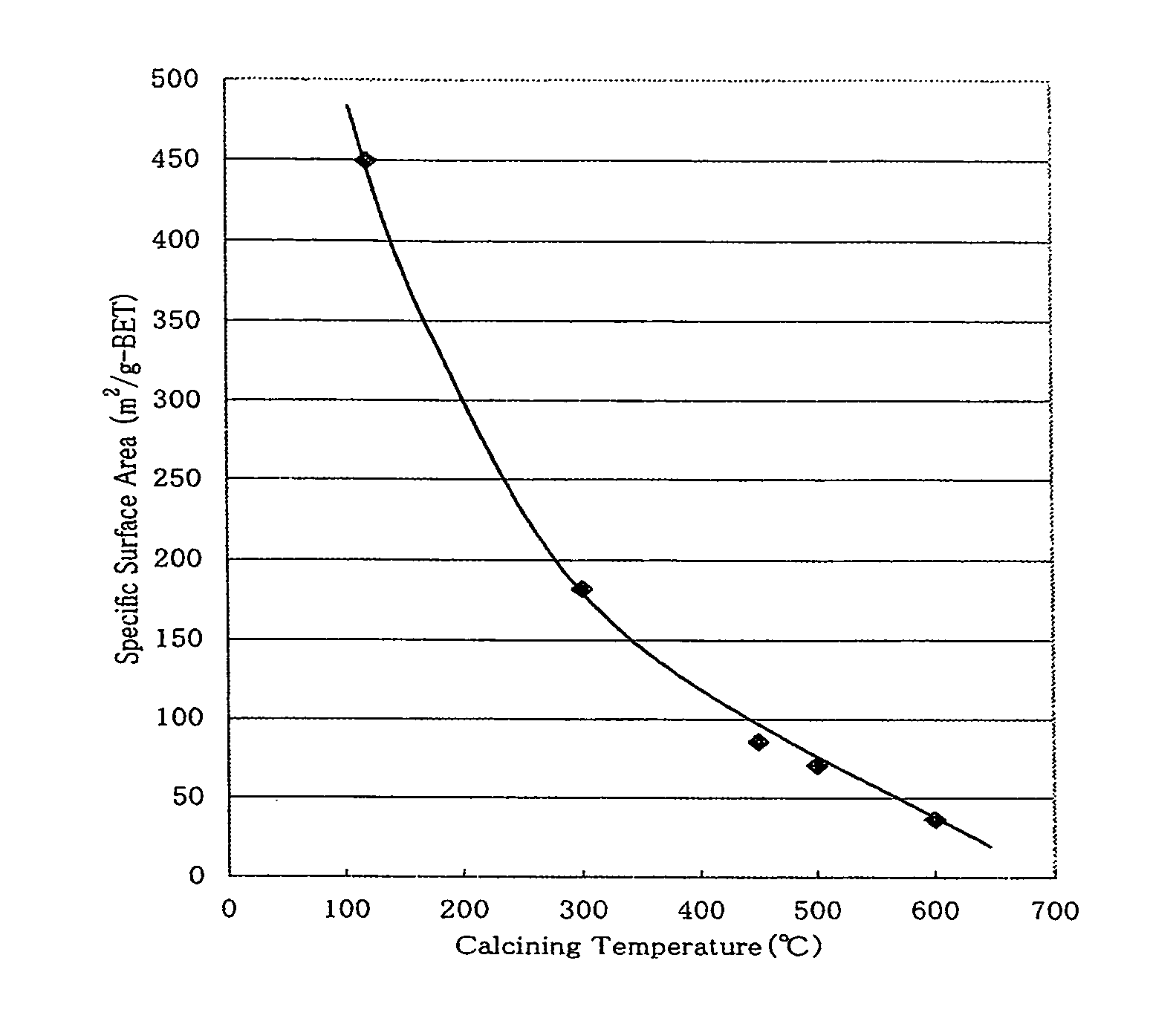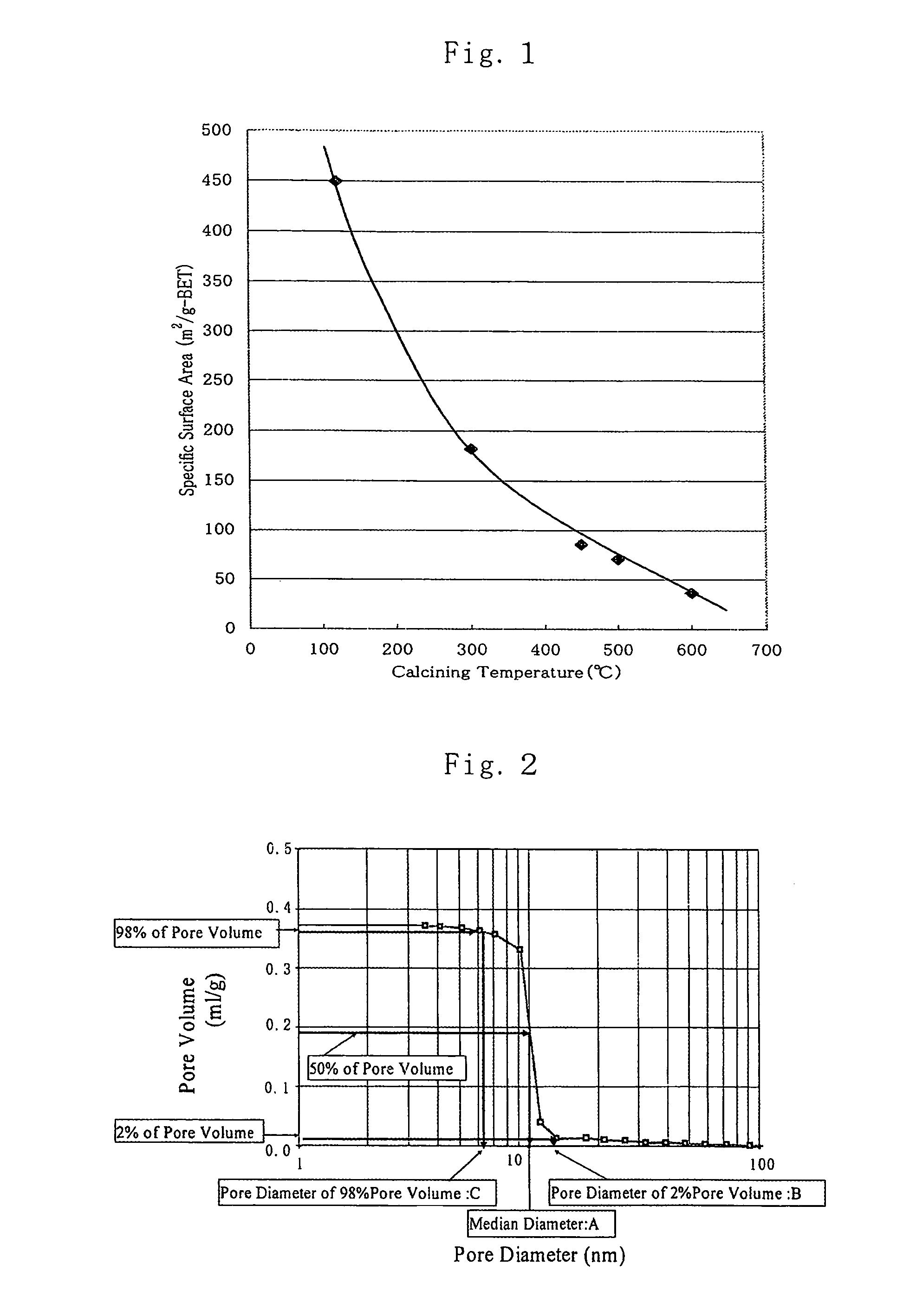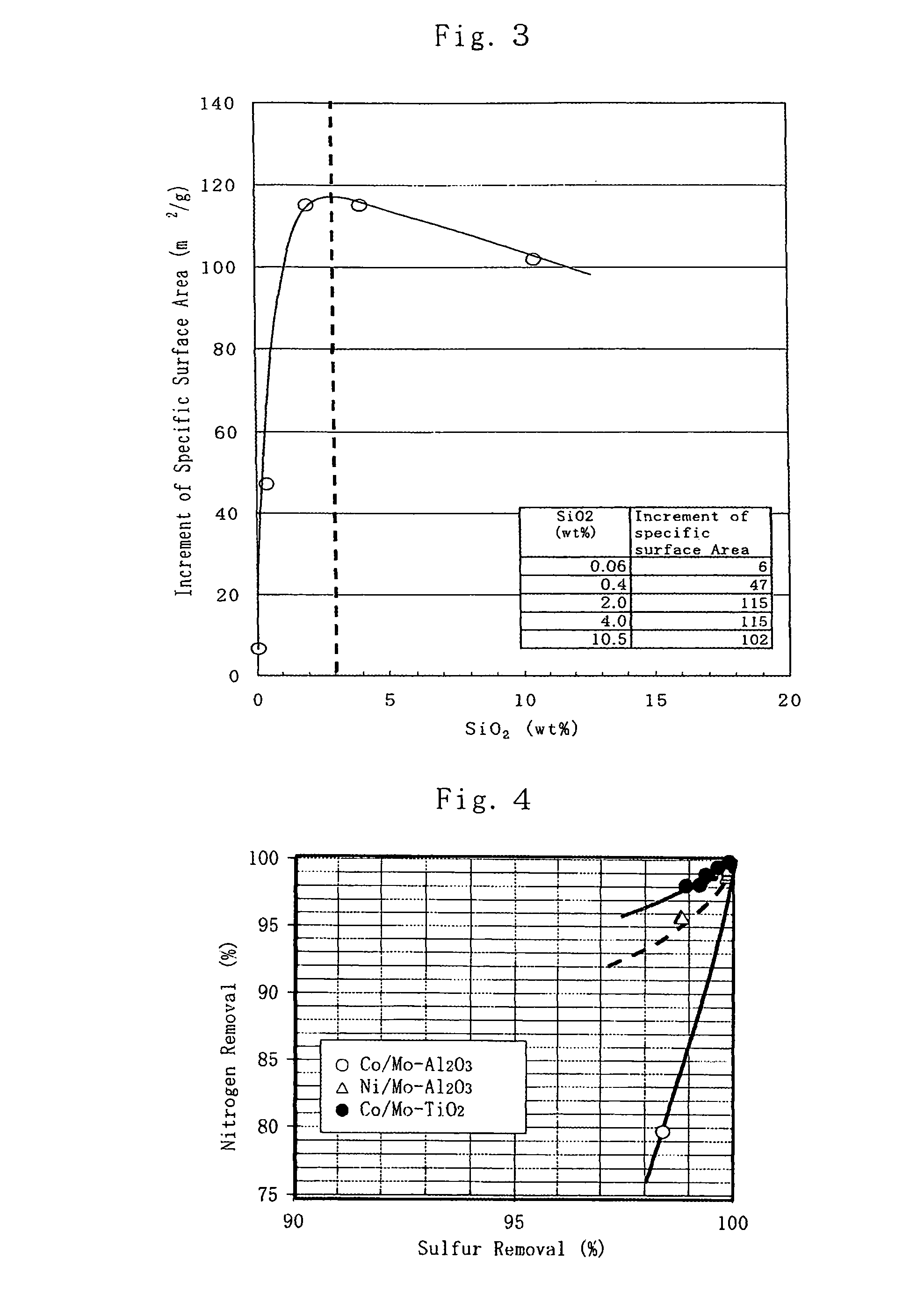Porous 4 group metal oxide and method for preparation thereof
a metal oxide and 4 group technology, applied in metal/metal-oxide/metal-hydroxide catalysts, zirconium compounds, physical/chemical process catalysts, etc., can solve the problems of affecting the desulfurization effect of titanium oxide preparation, etc., to achieve excellent desulfurization
- Summary
- Abstract
- Description
- Claims
- Application Information
AI Technical Summary
Benefits of technology
Problems solved by technology
Method used
Image
Examples
example 1
Step for Synthesis of Hydrous Titanium Oxide Particles
[0108]Silicon tetrachloride (SiCl4) was used as a particle growth inhibiter of hydrous titanium oxide. To a vessel containing 5500 g of an aqueous solution of silicon tetrachloride (concentration of silicon, 0.29 g / l computed as SiO2) were added 165 g of an aqueous solution of titanium tetrachloride with a concentration of 500 g / l and 166 g of 14 wt % ammonia water to synthesize a hydrosol slurry of hydrous titanium oxide. The temperature for this synthesis was 60° C.
[0109]A pH swing operation was performed on the hydrosol slurry of hydrous titanium oxide thus obtained by adding 165 g of an aqueous solution of titanium tetrachoride with a concentration of 500 g / l, returning the pH to the dissolving range of hydrous titanium oxide on the acidic side, and then adding 166 g of 14 wt % ammonia water to shift the pH of the slurry to the precipitating range of hydrous titanium oxide on the alkaline side, and another pH swing operation ...
example 2
[0115]Porous titanium oxide was obtained as in Example 1 with the exception of using an aqueous solution of phosphoric acid (concentration of phosphorus, 0.25 g / l computed as P2O5) as a particle growth inhibiter of hydrous titanium oxide and setting the synthesis temperature at 80° C.
[0116]The properties of the porous titanium oxide thus obtained are shown in Table 2.
example 3
[0117]Porous titanium oxide was obtained as in Example 1 with the exception of using an aqueous solution of magnesium chloride hexahydrate (concentration of magnesium, 0.08 g / l computed as MgO) as a particle growth inhibiter of hydrous titanium oxide, setting the synthesis temperature at 100° C., performing the pH swing operation twice under such conditions as to produce the same amount of hydrous titanium oxide as in Example 1 and adjusting the pH of the final hydrosol slurry of hydrous titanium oxide to 8.
[0118]The properties of the porous titanium oxide thus obtained are shown in Table 2.
PUM
| Property | Measurement | Unit |
|---|---|---|
| specific surface area | aaaaa | aaaaa |
| pore diameter | aaaaa | aaaaa |
| specific surface area | aaaaa | aaaaa |
Abstract
Description
Claims
Application Information
 Login to View More
Login to View More - R&D
- Intellectual Property
- Life Sciences
- Materials
- Tech Scout
- Unparalleled Data Quality
- Higher Quality Content
- 60% Fewer Hallucinations
Browse by: Latest US Patents, China's latest patents, Technical Efficacy Thesaurus, Application Domain, Technology Topic, Popular Technical Reports.
© 2025 PatSnap. All rights reserved.Legal|Privacy policy|Modern Slavery Act Transparency Statement|Sitemap|About US| Contact US: help@patsnap.com



